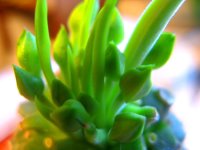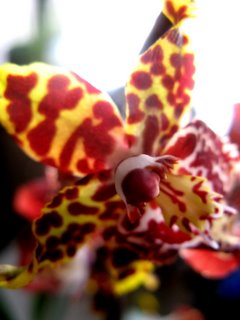Mimulus aurantiacus




I've said it before, but the genus Euphorbia is diverse. On my window sill I have two Euphorbias. Both are succulents from the cape region of South Africa. Looking at them, you'd have a tough time determining that the two are closely related.


Each of the pointed woody knobs of the "bark" is really the remnants of a leaf's petiole, the leaf's base. That's one way to protect yourself from herbivores.
This is E. horrida var. horrida or the Milk Barrel. It is covered with "spines" and looks very much like a cactus (but true cacti are only found in the New World). When I first bought this at the Boyce Thompson Arboretum the flowers were a deep burgund. Now they've dried and you can see from this picture how the flowers are falling off, leaving behind a sharp stalk. (I really can't think of another plant that does this).

Despite being in the same genus, these euphorbias have evolved two completely different methods of protecting themselves. One protective strategy they do share, however, is the toxic milky sap they exude when damaged (this is where the name Milk Barrel comes from).
Anyway, I think these plants are fascinating.


